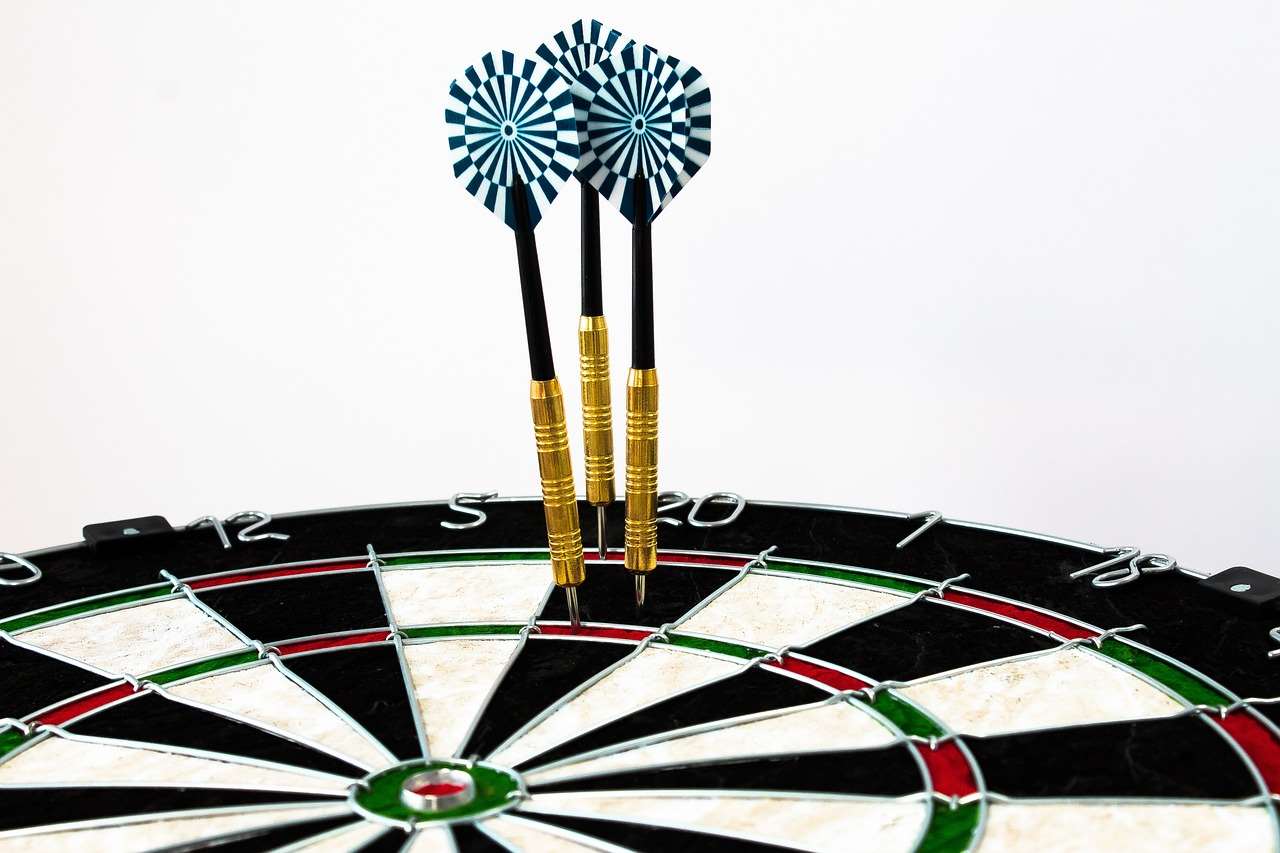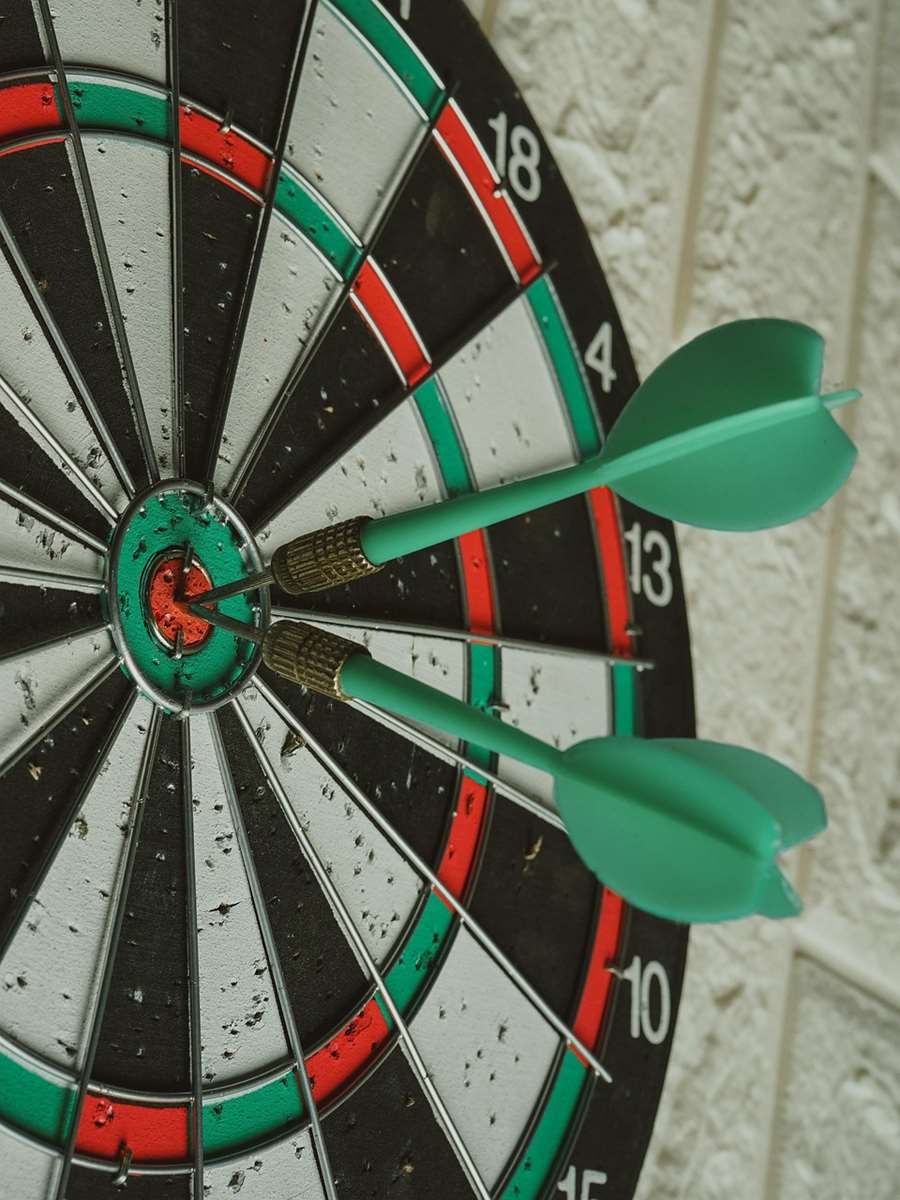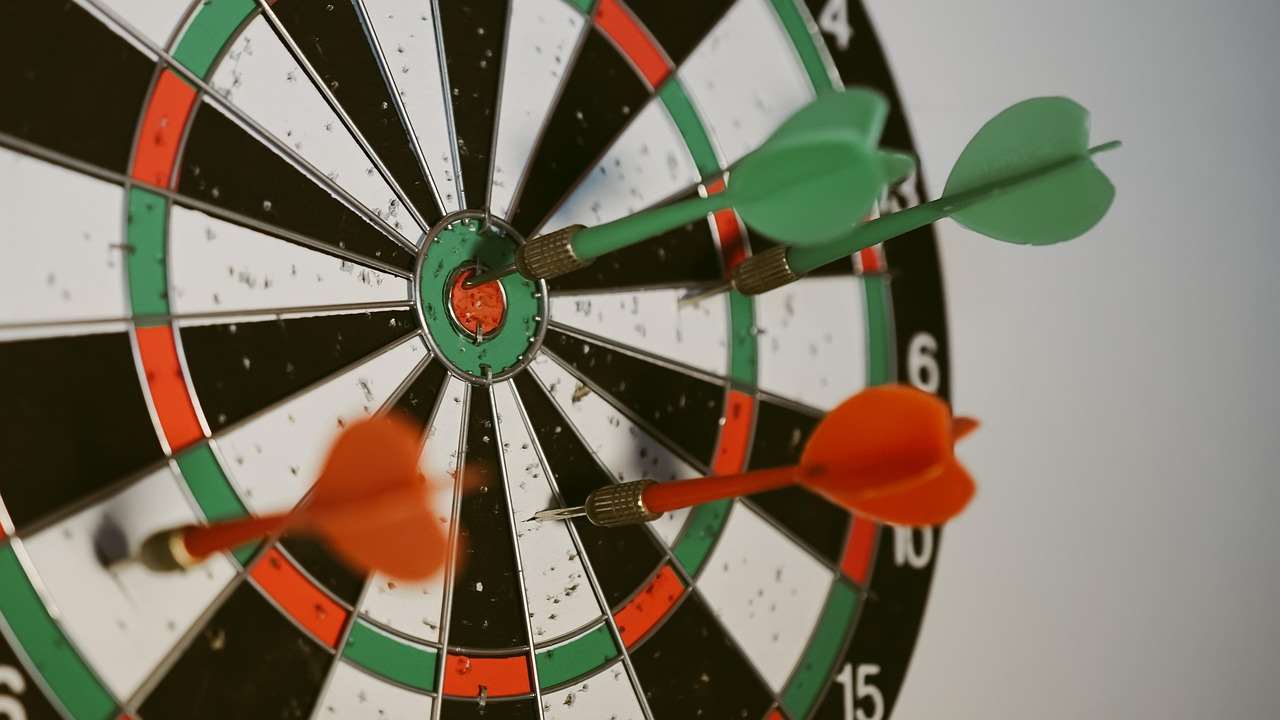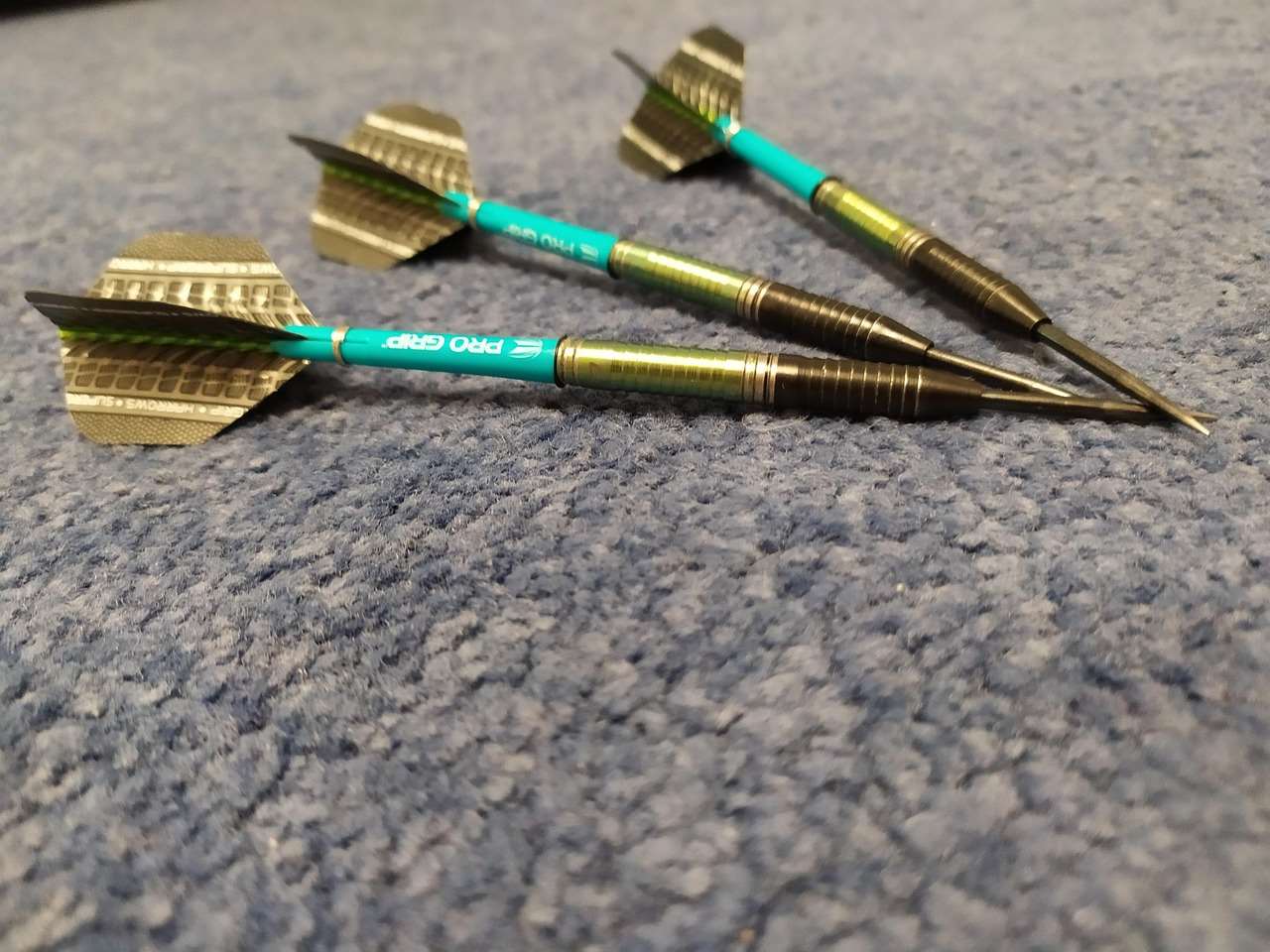Frustrated by consistently poor scores at the oche? Understanding and addressing the common causes of darts low scores is the first step to improvement. This article will delve into the fundamental reasons behind low scores, offer practical tips to enhance your game, and explore strategies to break through those frustrating plateaus.
⚠️ Still Using Pen & Paper (or a Chalkboard)?! ⚠️
Step into the future! The Dart Counter App handles all the scoring, suggests checkouts, and tracks your stats automatically. It's easier than you think!
Try the Smart Dart Counter App FREE!Ready for an upgrade? Click above!
Understanding the Root Causes of Darts Low Scores
Consistently achieving **darts low scores** can stem from a variety of factors, both technical and mental. Before you can improve, it’s crucial to identify the specific areas where your game is faltering. Let’s break down some of the most common culprits:
- Inconsistent Throwing Technique: A lack of consistency in your stance, grip, release, and follow-through is a major contributor to erratic dart placement. Even slight variations can significantly impact accuracy.
- Poor Dartboard Setup: A dartboard that isn’t properly mounted at the correct height and distance can skew your perception and lead to misplaced throws. Also, the condition of the dartboard itself matters; a worn-out board with loose wires will affect scoring.
- Incorrect Dart Selection: Using darts that don’t suit your throwing style and grip can make it difficult to control the dart’s trajectory. Experimenting with different weights, shapes, and materials is essential. Learn more about types of dart barrels to find the best fit for you.
- Mental Game Weakness: Pressure, anxiety, and a lack of focus can negatively impact your throwing accuracy. Developing mental resilience is just as important as honing your physical skills.
- Lack of Practice and Routine: Like any skill, darts requires consistent practice to maintain and improve. Sporadic play will hinder your progress, and a lack of a structured practice routine will make it difficult to identify and address specific weaknesses.

Diagnosing Your Specific Darts Low Scores Issues
Pinpointing the exact reasons behind your darts low scores requires some self-assessment and careful observation. Here’s a breakdown of how to identify your specific weaknesses:
- Video Analysis: Record yourself throwing darts from different angles. Analyzing your technique in slow motion can reveal subtle inconsistencies you might not notice in real-time. Pay close attention to your stance, grip, arm movement, and follow-through.
- Statistical Tracking: Keep track of your scores for each throw and each target (e.g., 20s, 19s, bullseye). This will help you identify patterns and determine which areas are consistently problematic. Use a Darts scoreboard app to simplify this process.
- Experimentation: Try different dart weights, shaft lengths, and flight shapes to see how they affect your accuracy. Experiment with different grips and throwing styles to find what feels most comfortable and consistent.
- Seek Feedback: Ask a more experienced darts player to watch you throw and provide constructive criticism. An outside perspective can often identify flaws you’re not aware of.
Common Dart Throwing Mistakes
Here are some common mistakes that contribute to darts low scores. Addressing these can lead to significant improvement:
- Gripping the Dart Too Tightly: A tense grip restricts your arm movement and reduces your feel for the dart.
- Jerky Throwing Motion: A smooth, fluid throwing motion is essential for accuracy. Avoid sudden jerks or pushes.
- Failing to Follow Through: Completing your throwing motion with a full follow-through helps ensure consistent release and trajectory.
- Not Focusing on the Target: Maintaining focus on the target throughout your throwing motion is crucial for accuracy.

Improving Your Throwing Technique to Avoid Darts Low Scores
Refining your throwing technique is paramount to eliminating darts low scores. Here’s how to improve your accuracy and consistency:
- Stance: Find a stance that is comfortable and stable. Most players stand with one foot slightly ahead of the other, angled towards the dartboard.
- Grip: Experiment with different grips to find one that allows you to maintain control of the dart without excessive tension. Consider different shaft for darts, and whether a shorter or longer one might benefit you.
- Arm Movement: Keep your upper arm relatively still and use your forearm to generate power. Your elbow should remain at a consistent angle throughout the throw.
- Release: Release the dart smoothly and consistently at the same point in your throwing motion.
- Follow-Through: Extend your arm fully towards the target after releasing the dart. This ensures a consistent trajectory.
Practice these elements deliberately, focusing on consistency and smoothness. Record yourself and compare your technique to that of professional darts players. Small adjustments can make a big difference.

The Importance of Dartboard Setup and Dart Selection
Optimizing your equipment and playing environment is vital for preventing darts low scores. A poorly set-up dartboard or ill-suited darts can significantly hinder your progress.
Dartboard Setup
- Height: The center of the bullseye should be exactly 5 feet 8 inches (1.73 meters) from the floor.
- Distance: The oche (throwing line) should be 7 feet 9 1/4 inches (2.37 meters) from the face of the dartboard.
- Lighting: Ensure the dartboard is well-lit to avoid shadows that can distort your perception.
- Condition: Regularly rotate your dartboard to distribute wear evenly. Replace the board when it becomes excessively worn.
Dart Selection
- Weight: Experiment with different dart weights to find one that feels comfortable and allows you to maintain control. Heavier darts are generally more stable, while lighter darts are easier to throw.
- Shape: Different dart shapes can affect the dart’s flight characteristics. Torpedo-shaped darts are generally more aerodynamic, while straight-barrel darts offer a more consistent grip.
- Flights: dart flight shapes and sizes significantly impact the dart’s stability and trajectory. Larger flights provide more stability, while smaller flights offer less drag.
Finding the right combination of dart weight, shape, and flights is a matter of personal preference. Don’t be afraid to experiment until you find what works best for you.

Mastering the Mental Game to Combat Darts Low Scores
Even with perfect technique and equipment, mental fortitude is crucial for overcoming darts low scores. Pressure and anxiety can significantly impair your performance.
Strategies for Mental Toughness
- Visualization: Visualize yourself throwing successful darts before each game or practice session. This can help boost your confidence and reduce anxiety.
- Positive Self-Talk: Replace negative thoughts with positive affirmations. Focus on your strengths and past successes.
- Breathing Techniques: Use deep breathing techniques to calm your nerves and improve focus. Take slow, deep breaths before each throw.
- Focus on the Process, Not the Outcome: Concentrate on executing your throwing technique correctly, rather than worrying about the score.
- Accept Mistakes: Everyone makes mistakes. Don’t dwell on bad throws; learn from them and move on.
Developing mental resilience takes time and practice. Be patient with yourself and focus on building a positive and confident mindset.

Structured Practice for Consistent Improvement in Darts
Consistent, purposeful practice is essential for breaking through darts low scores. Randomly throwing darts without a plan will yield limited results.
Effective Practice Routines
- Warm-up: Start each practice session with a warm-up to loosen your muscles and improve your focus.
- Target Practice: Spend time focusing on specific targets, such as the 20s, 19s, and bullseye.
- Checkout Practice: Practice common checkout combinations to improve your scoring efficiency.
- Game Simulation: Play practice games against yourself or others to simulate real-game pressure.
- Record Your Progress: Track your scores and identify areas where you need to improve.
A well-structured practice routine will help you identify your weaknesses, refine your technique, and build confidence. Make practice a regular part of your routine, even if it’s just for a short period each day. Also, remember to stay hydrated; proper hydration enhances performance and focus.
Conclusion
Overcoming darts low scores requires a multifaceted approach, addressing technical flaws, mental game weaknesses, and equipment considerations. By consistently practicing proper technique, developing mental resilience, and optimizing your dartboard setup and dart selection, you can significantly improve your scoring ability. Remember to track your progress, seek feedback, and remain patient throughout the process. The path to improvement takes time and dedication, but the rewards of consistent scoring and enhanced enjoyment of the game are well worth the effort. Now, grab your darts and start practicing!
Hi, I’m Dieter, and I created Dartcounter (Dartcounterapp.com). My motivation wasn’t being a darts expert – quite the opposite! When I first started playing, I loved the game but found keeping accurate scores and tracking stats difficult and distracting.
I figured I couldn’t be the only one struggling with this. So, I decided to build a solution: an easy-to-use application that everyone, no matter their experience level, could use to manage scoring effortlessly.
My goal for Dartcounter was simple: let the app handle the numbers – the scoring, the averages, the stats, even checkout suggestions – so players could focus purely on their throw and enjoying the game. It began as a way to solve my own beginner’s problem, and I’m thrilled it has grown into a helpful tool for the wider darts community.